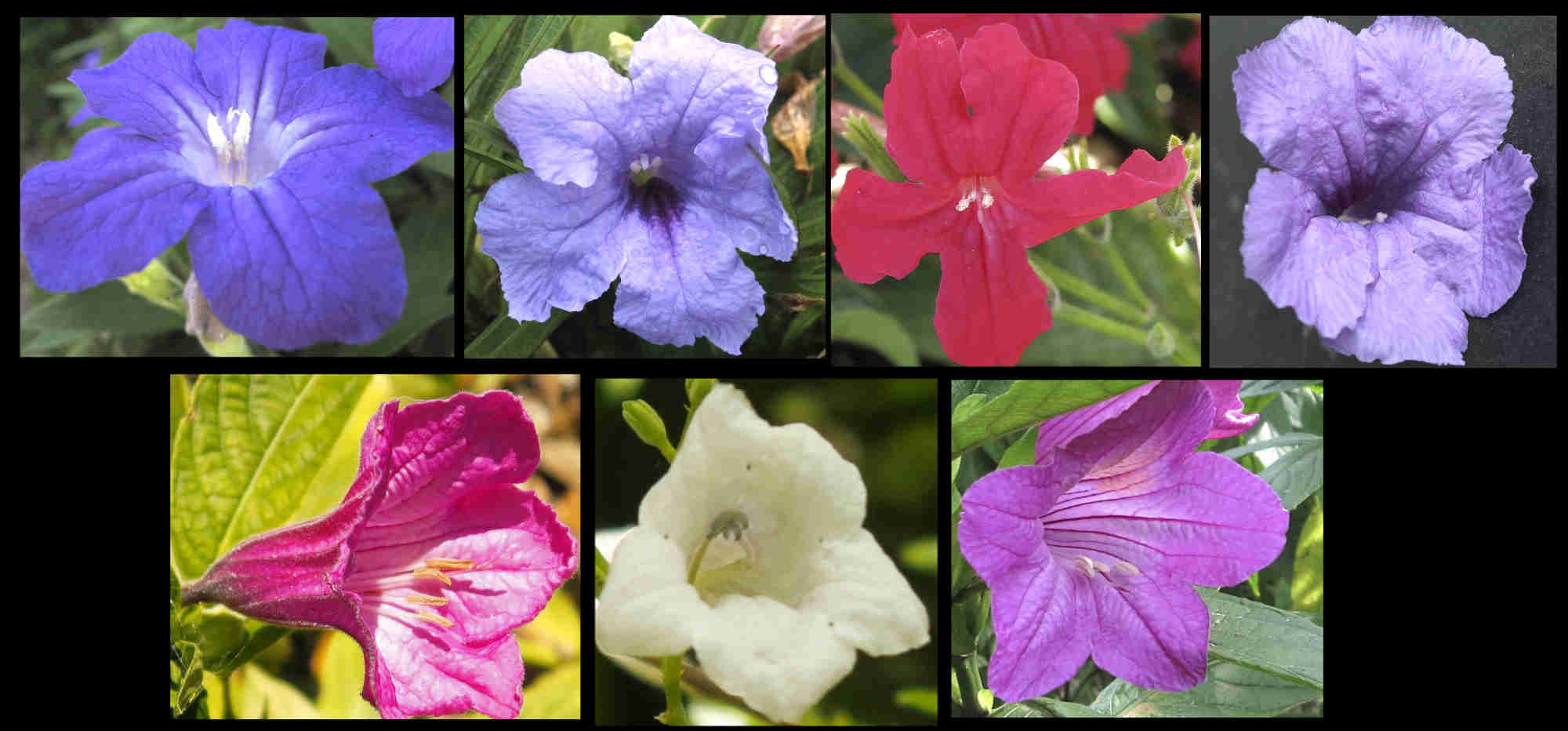Ruellia.
Family Acanthaceae > Subfamily Acanthoideae > Tribe Ruellieae.
Native to Mexico and South America Plants of the World Online (Kew) recognises 365 species.
Australia has around 4 naturalised species of Mexican petunias.
They are erect to prostrate, evergreen perennial herbs or shrubs up to 1 m high.
There are glandular hairs on the young 4-angled stems.
The opposite leaves may or may not have a petiole.
The blades can be ovate, elliptic, lanceolate or obovate.
They taper gradually to a pointed tip, the base is wedge-shaped or tapered and the edges smooth or toothed.
Cystoliths (a collection of calcium carbonate on a cellulose stalk inside a cell) are usually present.
There may be scattered hairs and glands.
The mainly axillary inflorescences can be 1 or 2 flowers or a variously arranged cluster including cymes and panicles (branched).
(A cyme has a flower at the end of the midrib and any branches and other flowers can only develop below it.)
Narrow leafy green bracts and bracteoles may be present.
The calyx, up to 2 cm long has a 1 to 2 mm tubular base with 5 long lobes.
The narrow lobes are of different lengths and 2 or 3 may be more fused than the others.
They usually have a keel and glandular or non-glandular hairs.
The curved corolla, up to 5 cm long has a tubular base, a usually wider throat and 5 spreading lobes.
The cylindrical base can be long or short with a short or long throat.
The ovate to round lobes may or may not be equal in size.
There are hairs on the outer surface.
Typically blue to purple there are also white, yellow and red flowers.
The 4 stamens are inserted onto the base of the throat.
They may all be free or in pairs with the lower 3 mm of the filaments fused.
There are simple hairs on the lower part of the filaments.
There is a small appendage from the connective tissue between the anther sacs.
There may be one infertile stamen or staminode.
The superior ovary has a style with hairs along it or just at the base.
The 2 stigma lobes may be equal or unequal.
The nectary disc is not well differentiated.
The fruit is a cylindrical or club-shaped capsule that usually opens along the dorsal (lower) suture.
Up to almost 3 cm long they may have scattered glandular hairs.
The up to 26 seeds, in 2 rows are attached by an angled arm or jaculator.
(A jaculator or retinaculum is the stalk of the ovule and it ejects the seed.)
The flattened, round or ovate brown seeds have a smooth surface.
There are often glandular hairs around the rim and sometimes on the surface that secrete a mucilaginous material that absorbs water.
J.F.


